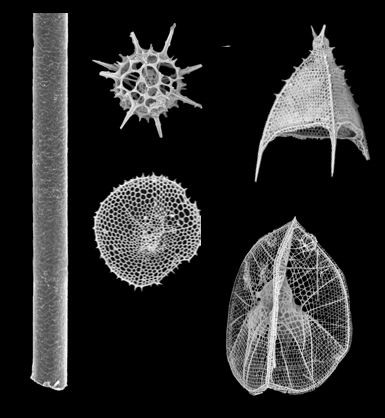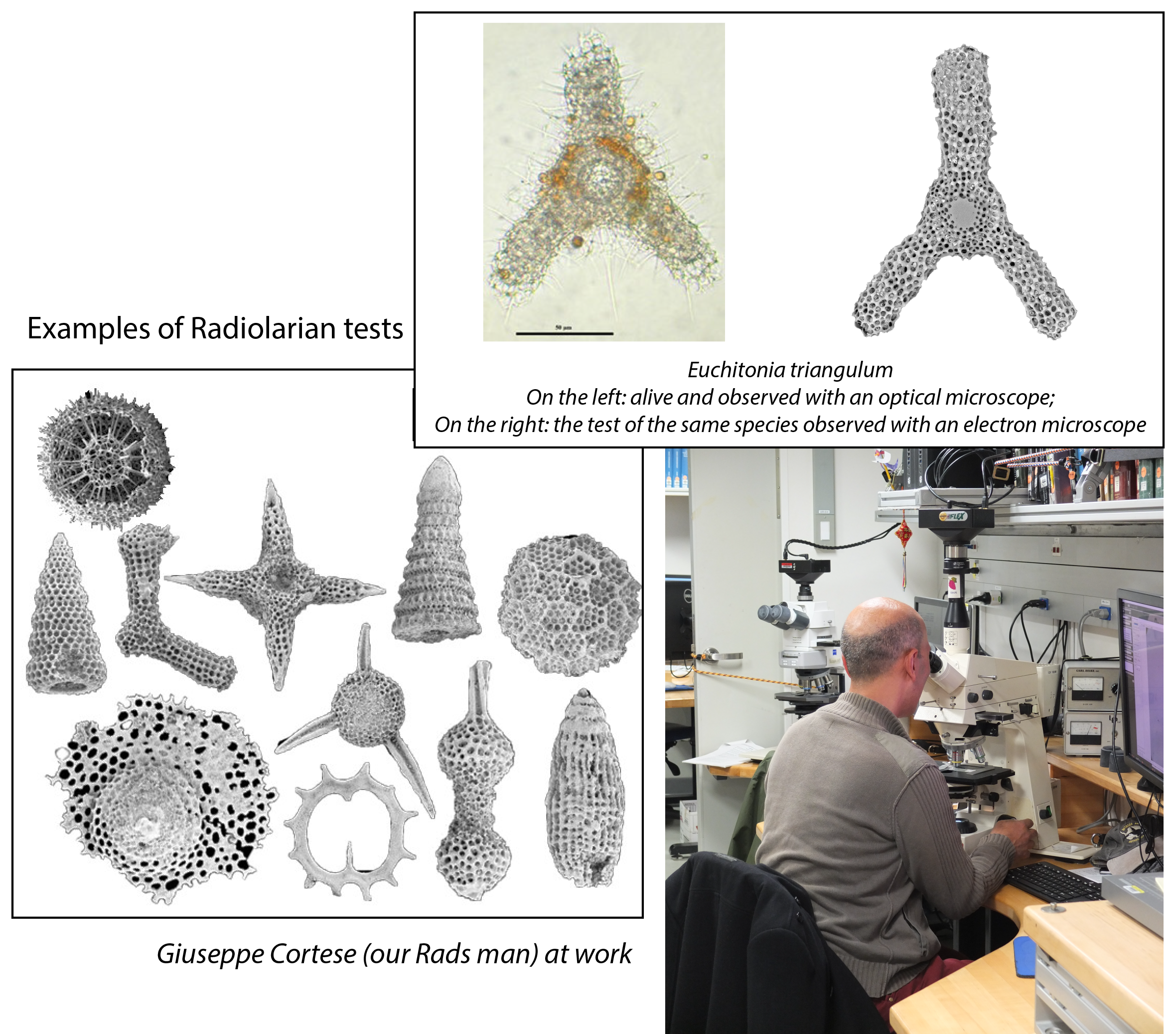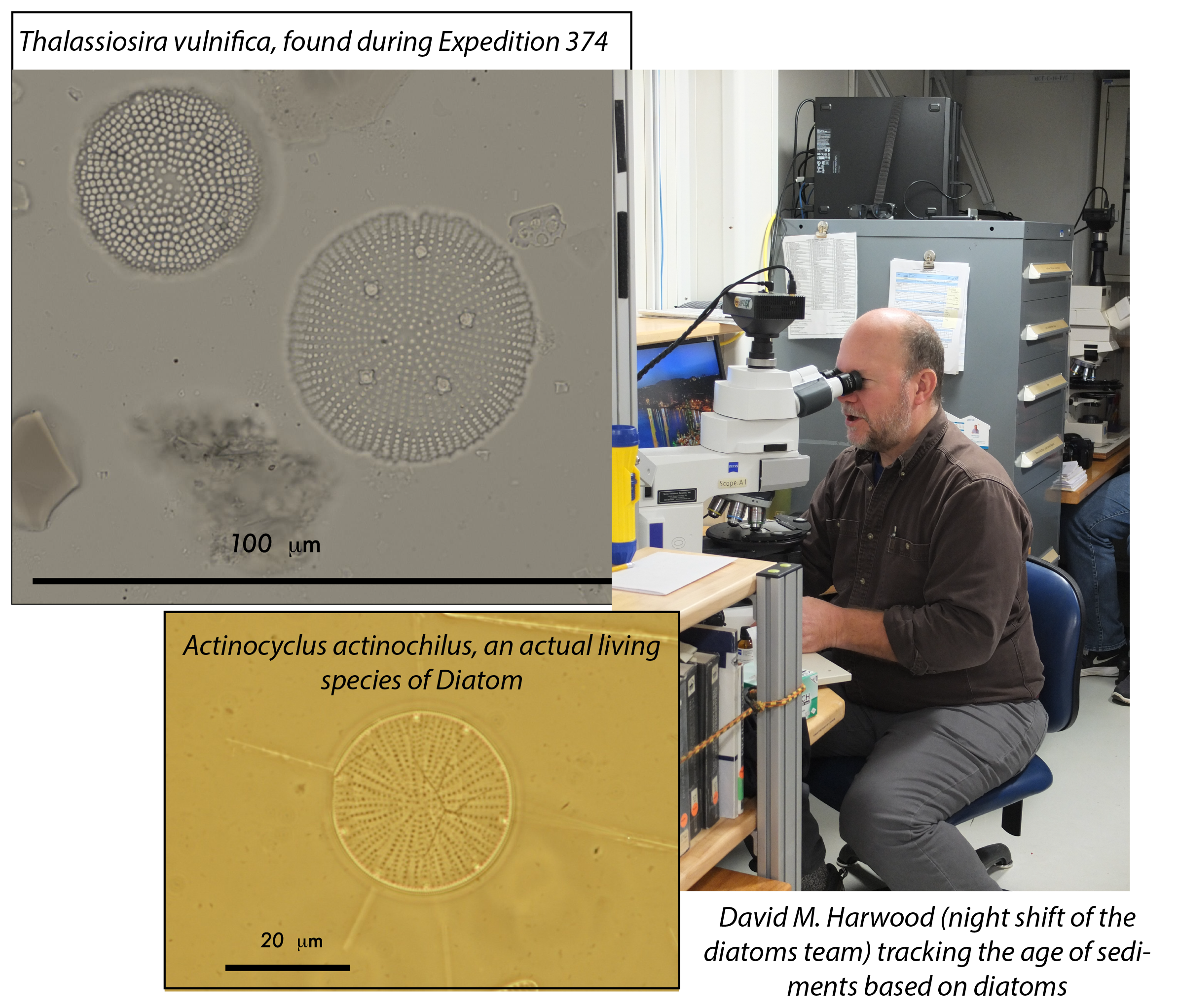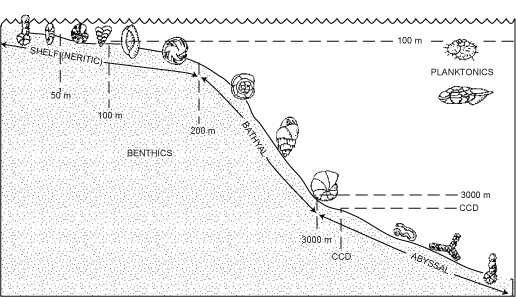
The timelords of Exp. 374
During Expedition 374, there are 7 micropaleontologists and 2 paleomagnetist specialists who are working together to track the age of the cores.
Meet the team and learn more about their work in the video below:
What are microfossils?
They are fossilized remains of tiny organisms such as algae. The fossils are formed from the hard parts of the organisms. We call these hard parts a test, which is really just a tiny shell. They are generally between 0.001 mm and 1 mm in size so that their study requires the use of the microscope. To illustrate how tiny they are, 4 species of radiolarians are compared to the thickness of a strand of hair in the picture below.
When we drill into sediments deposited on the seafloor, the deeper we drill the older the sediments are. We can use the fossils to tell us the age because different species have appeared, evolved and become extinct during the past. The main goal of our micropaleontology team is to find and identify these fossils to determine the age of the sediments.

Why are we using microfossils?
Microfossils are especially valuable for determining the relative ages of marine rock layers for several reasons:
- Their remains are frequently found in sediments.
- They have been around for millions of years.
- They show fairly continuous evolutionary development, so different species are found at different times.
- They are abundant, widespread, and found in nearly all marine environments.
- Finally, they are small and easy to collect, even from deep drill holes.
On board, our micropaleontologists are specialized in a different microfossil groups. Let me introduce these groups to you!
During Expedition 374, we have specialists for:
- Radiolarians: These fossils are the glassy skeletal remains of a radiolarian, which is a single-celled animal-like organism. Their skeletons tend to have arm-like extensions that resemble spikes, which are used both to increase surface area for buoyancy and to capture prey. All radiolarians are planktonic (floating in the water), and move around by coasting along ocean currents. They are a very ancient group (going back to the Cambrian Period, 541–485 million years ago) and so they are very useful to date sediments.

- Diatoms: These are protists (single-celled organisms) with a test (shell) made out of silica (glass), but they are usually much smaller that radiolarians. One of the main differences between diatoms and radiolarians is that diatoms are photosynthetic and consequently are restricted to the photic zone (water depths less than 100 m depending on clarity or the water). Both benthic and planktonic forms exist. Planktonic forms are free floating (like the radiolarians), whereas benthic forms live attached to something, such as the seafloor, kelp, etc.
Diatoms may occur in such large numbers and be well preserved enough to form sediments composed almost entirely of diatom tests: these sediments are called diatomites.

- Foraminifers. These single-celled organisms have skeletons made of calcium carbonate (the mineral calcite) or particles that they find in the ocean and stick together to form a shell (called agglutinated). Most species have tests composed of multiple chambers that increase in size during growth. Most of the species live on or in the sand, mud, rocks, and plants at the bottom of the ocean (benthic) and the remainder are planktonic (living in the water column).

- Dinoflagellates are mostly single-celled, although they sometimes lived together in chains. Their size is between ~20 and 200 μm. Their name derives from the Greek (in greek, “dino” mean whirling) as this the type of movement is characteristic of these organisms:
Some species are photosynthetic, others are exclusively heterotrophic and some can be both. As a consequence, they are prominent members of both the phytoplankton and the zooplankton of marine and freshwater ecosystems and are important in ice communities from Antarctica.
So, our micropaleontologists on board are the timelords of the ship (together with our paleomagnetists!). If you want to discover a few of their secrets, stay tuned for the next episode!